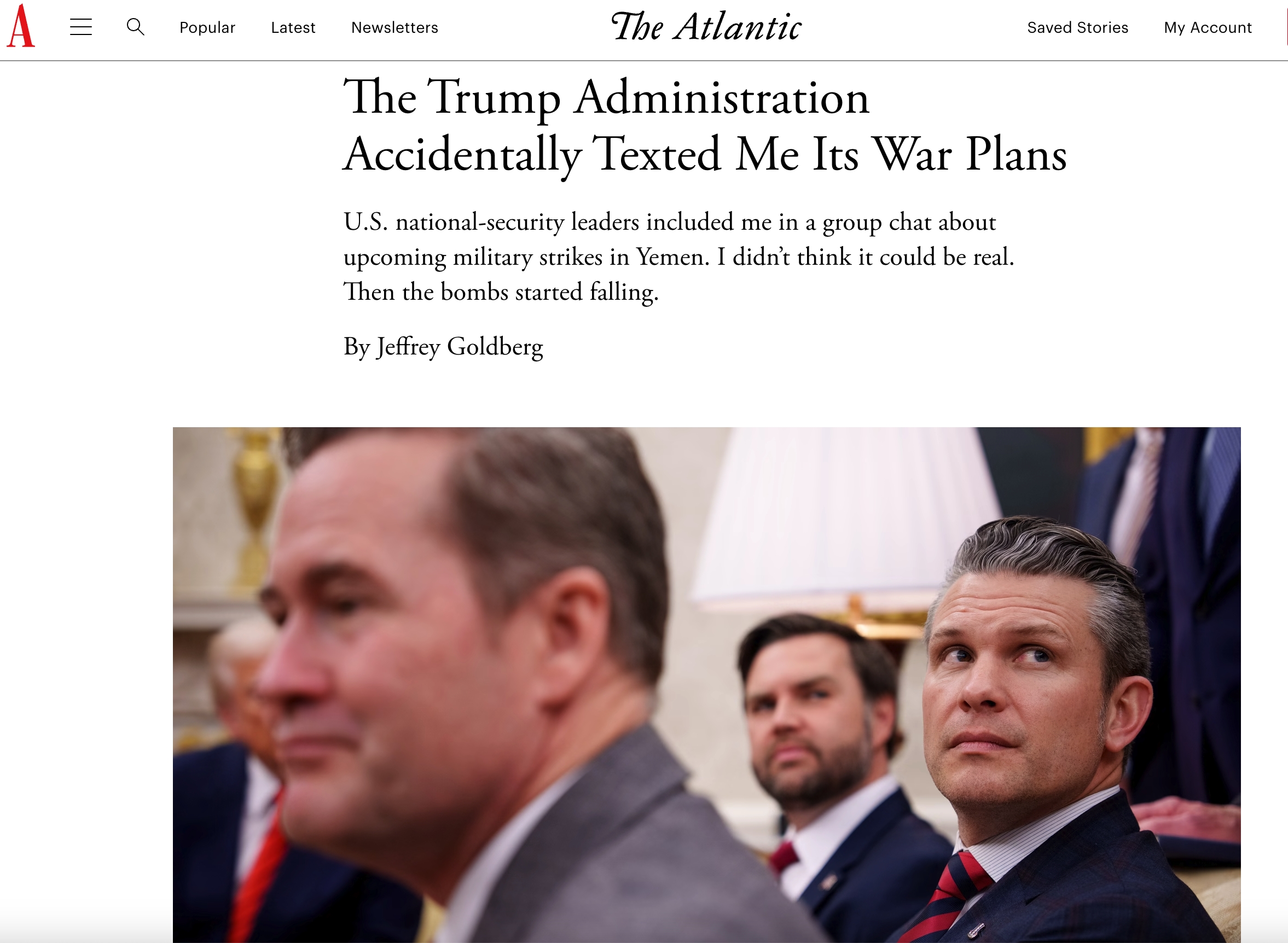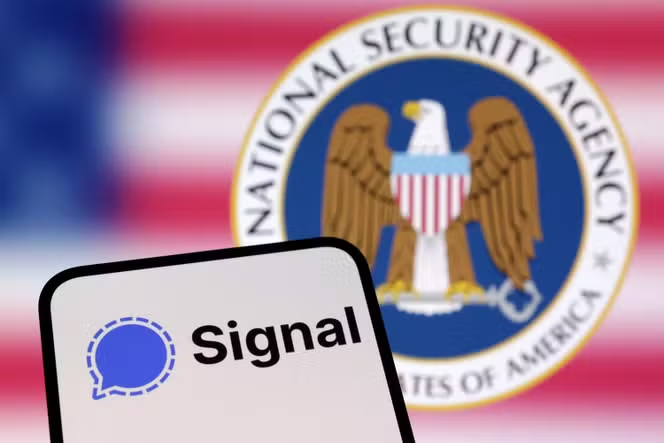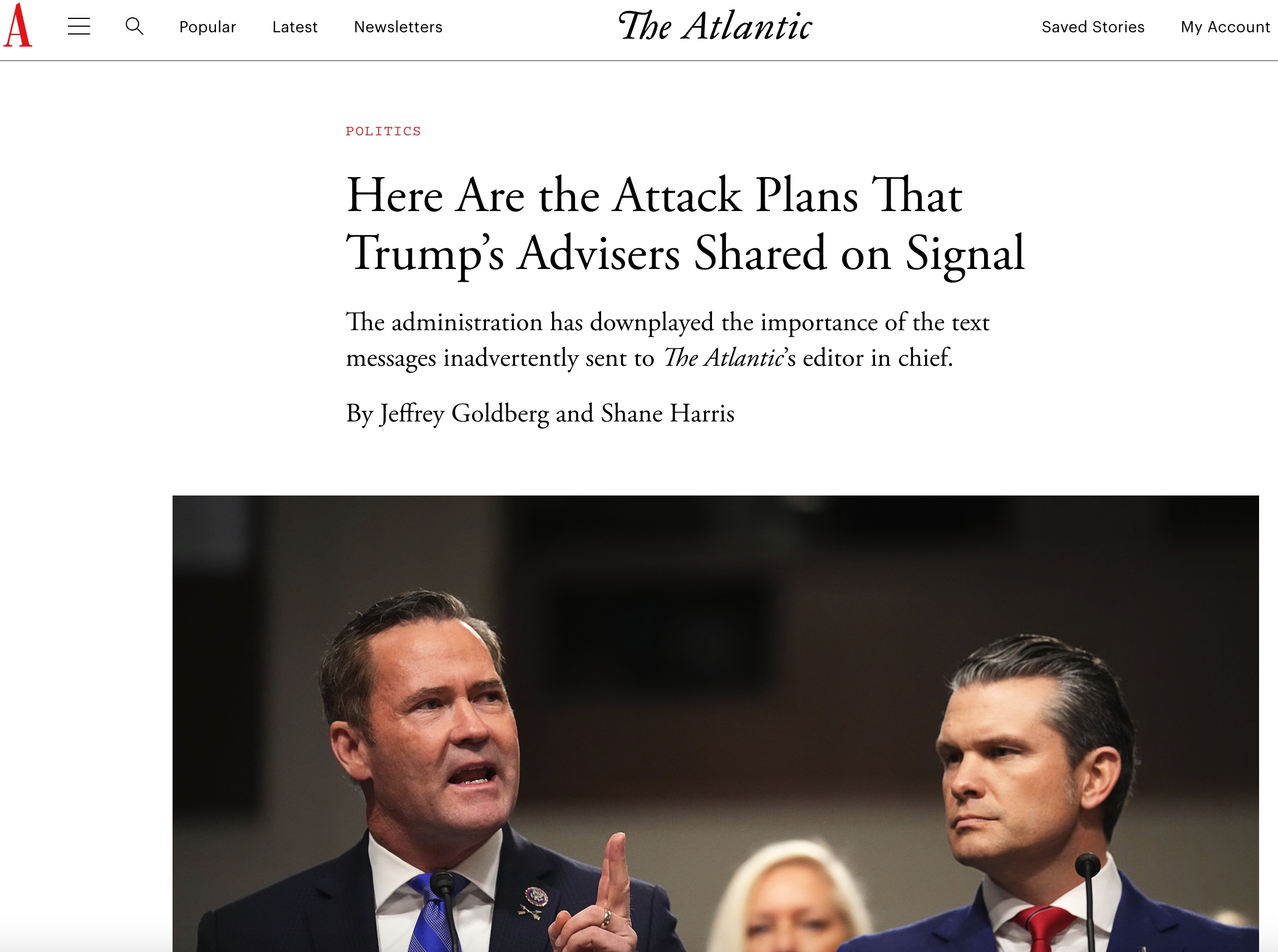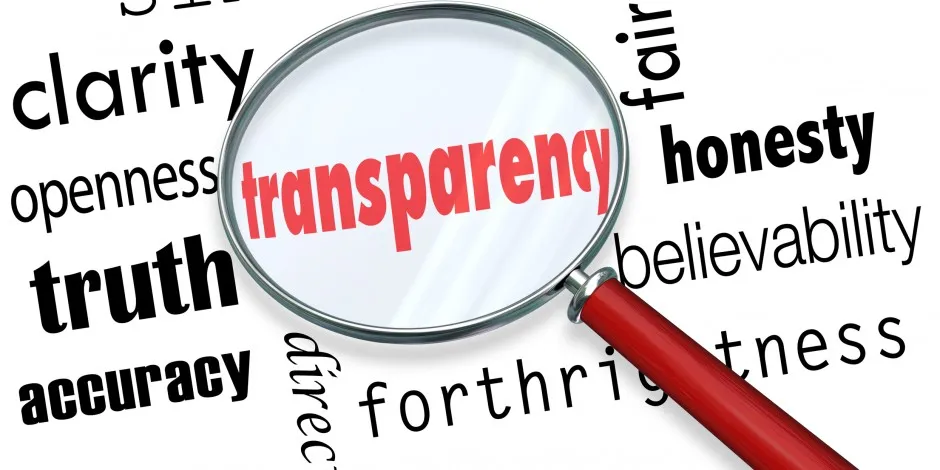The Atlantic’s huge scoops this week prove the power in journalists showing their work

More than the pleasure of watching a great journalist unfurl an amazing scoop – or seeing a group of bumbling leaders exposed for their bumbling – what I have most enjoyed about the “Signalgate” scandal is seeing ethical, transparent journalism at the heart of the nation’s biggest story.
As somebody who will soon be teaching this stuff to young journalists, it’s important to note when somebody gets it right. More importantly, it’s a great example that ethical, fair transparent journalism can also – should also – feed the best journalism.
The situation is fairly simple. Jeffrey Goldberg, editor-in-chief of The Atlantic, found out in mid-March that he had been included among a text chain on the messaging app Signal, which seemed to include major Trump administration figures like the Vice President, the Secretary of Defense and the director of National Intelligence.

Goldberg wasn’t sure at first if he was being fed misinformation in an attempt to fool him or provoke reporting which might then be debunked. Given how figures like James O’Keefe have used hidden cameras and subterfuge to trick mainstream journalists and other subjects in the past, it wasn’t outside the bounds of possibility. So he observed the messages until the bombing in Yemen, which was discussed in messages hours before it happened, convinced him it was true.
After leaving the chat – which notified the organizer he had been on the text chain to begin with – he reached out to participants to ask questions about what they had discussed and to verify that the discussion was real. Once the White House verified it and he had some reactions, Goldberg published one story detailing how he was included, what was discussed, why he held back some information from the chats and how he came to publish the story.
In the original story, Goldberg also detailed how they questioned experts on the legal ramifications of using Signal to discuss war plans. A reporter presented hypotheticals to experts, without showing them the actual text messages or initially telling them the situation had actually happened.

When several Trump administration officials said nothing discussed on the texts was classified – implying The Atlantic was lying about the substance of the texts — Goldberg published another story detailing the full texts, so the public could decide for themselves whether sensitive information had been discussed.
Even then, before publishing, the magazine says it contacted the Central Intelligence Agency, the Office of the Director of National Intelligence, the National Security Council, the Department of Defense, and the White House to ask if there was a valid reason to withhold the full texts. They decided to withhold the name of one CIA officer, even though the director of the agency said publicly that the person was not undercover and it was appropriate to share their name in the Signal conversation.

From my perspective, this is how great journalism should be practiced. Not only did Goldberg tell readers how he learned about the information in the story, he also detailed how the magazine verified the information, which agencies and figures they sought comment from and when, what their responses were – even when they strained credulity – and why they made the decisions to release the information they eventually made public.
Other gold stars here for how Goldberg removed himself from the chat when he realized it was genuine and didn’t report publicly on what he had witnessed until he gave the other people on the message chain a chance to respond. The timing of seeking comment is always a tough decision – according to his story, Goldberg messaged the people on the text chain the morning before they published the story. But in pieces like this one, where the potential for embarrassment and even criminal charges is possible, journalists must balance seeking comment with the possibility that the story might be leaked or distorted if too much time passes.
There was also a fair amount of time between Goldberg’s action to leave the chat on March 15, and when the story was published, March 24. During this time, Goldberg and reporter Shane Harris seemed to be doing the additional reporting they alluded to in the first piece and prepping the text for publication after they sought comment.
As I said during a public panel last week at the New York Historical, average readers too often have little understanding of how we report important pieces like the Signalgate story. They may not understand the level of reporting required, or the thought processes which go into deciding what to disclose and how.
Keeping those details close can help keep competitors from learning how you landed key stories. But they also keep the public from understanding the work required to develop a reporting experience into a finished piece, which makes it easier for bad faith critics to challenge legitimate journalism.
Too often, big journalism stories can seem like a magic trick, where august names like The New York Times and CNN drop major revelations with little sense of how the stories were discovered or reported. But at a time when powerful forces are working hard to de-legitimize traditional journalism, we no longer get the same benefit of the doubt – we have to show our work a lot more. And The Atlantic certainly did that here.
It may feel laborious and unwieldy to do this with most stories. And Goldberg’s transparency was inherently a big part of telling this story – showing exactly what a huge security breach this was and how it unfolded.
Still, I think there is a lesson here for traditional journalists on howe to handle more big stories in the future. We need to show our work in a way that answers the public’s questions and defuses bad faith critiques, highlighting the difference between what we do and misinformation/disinformation/propaganda.